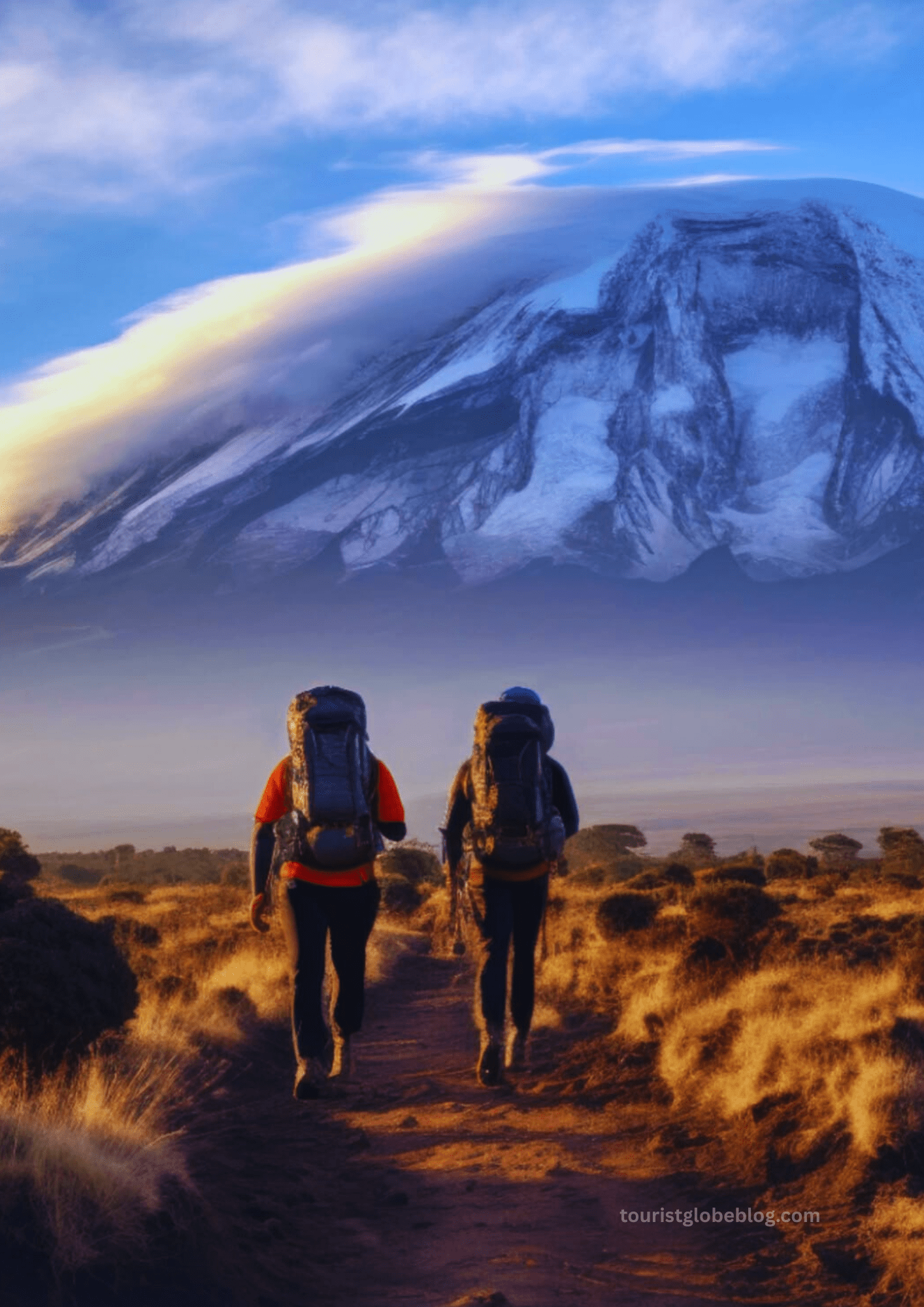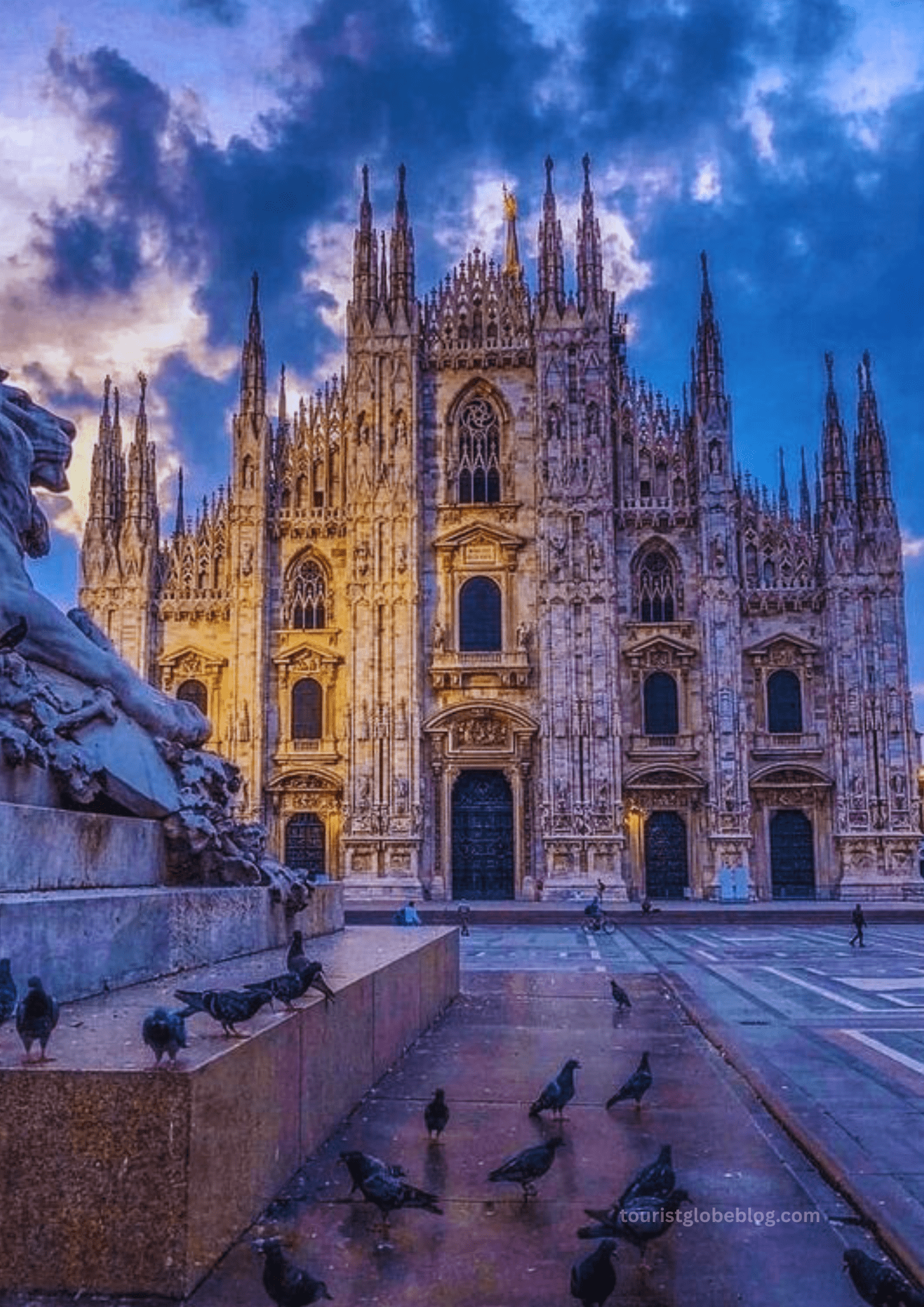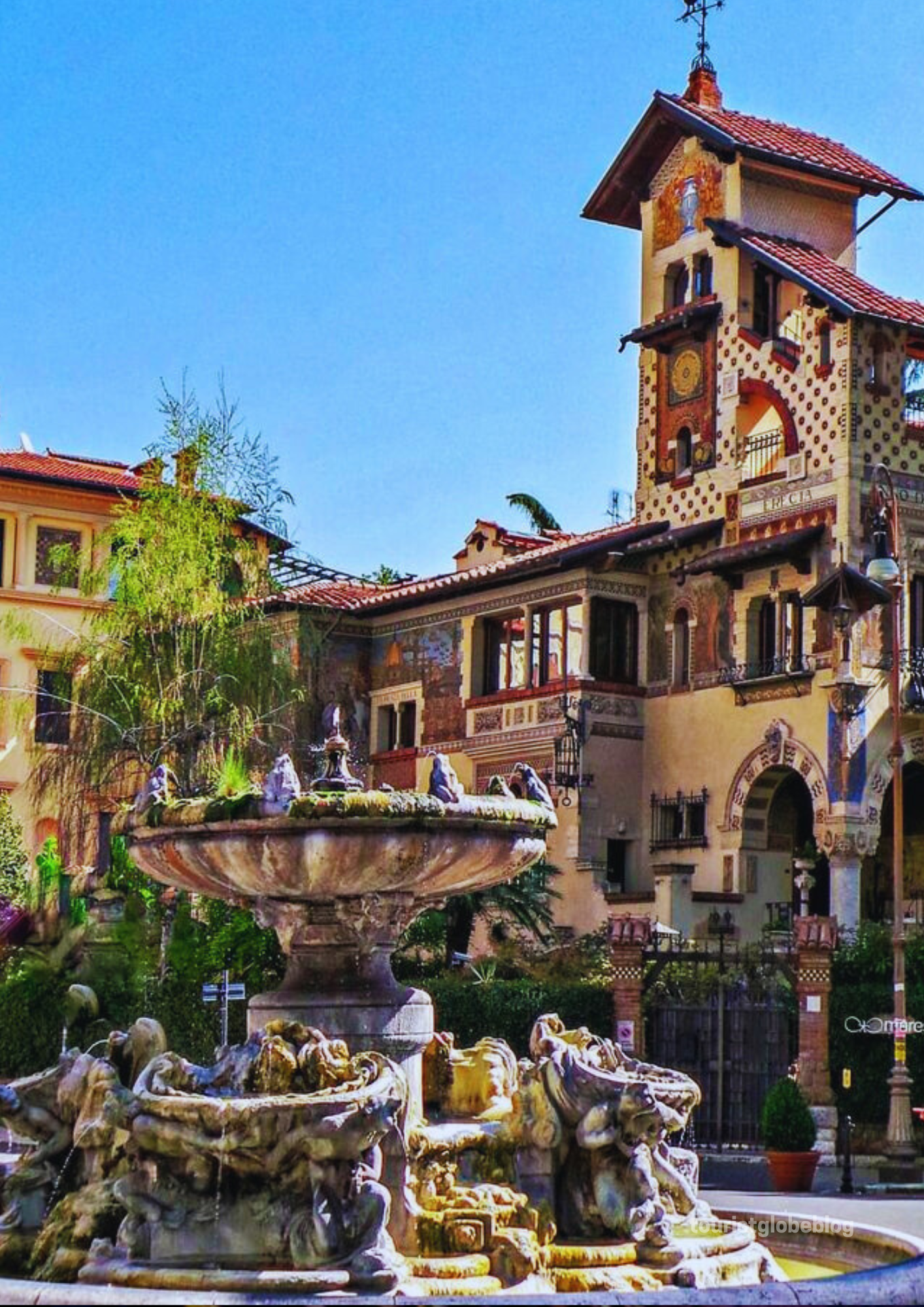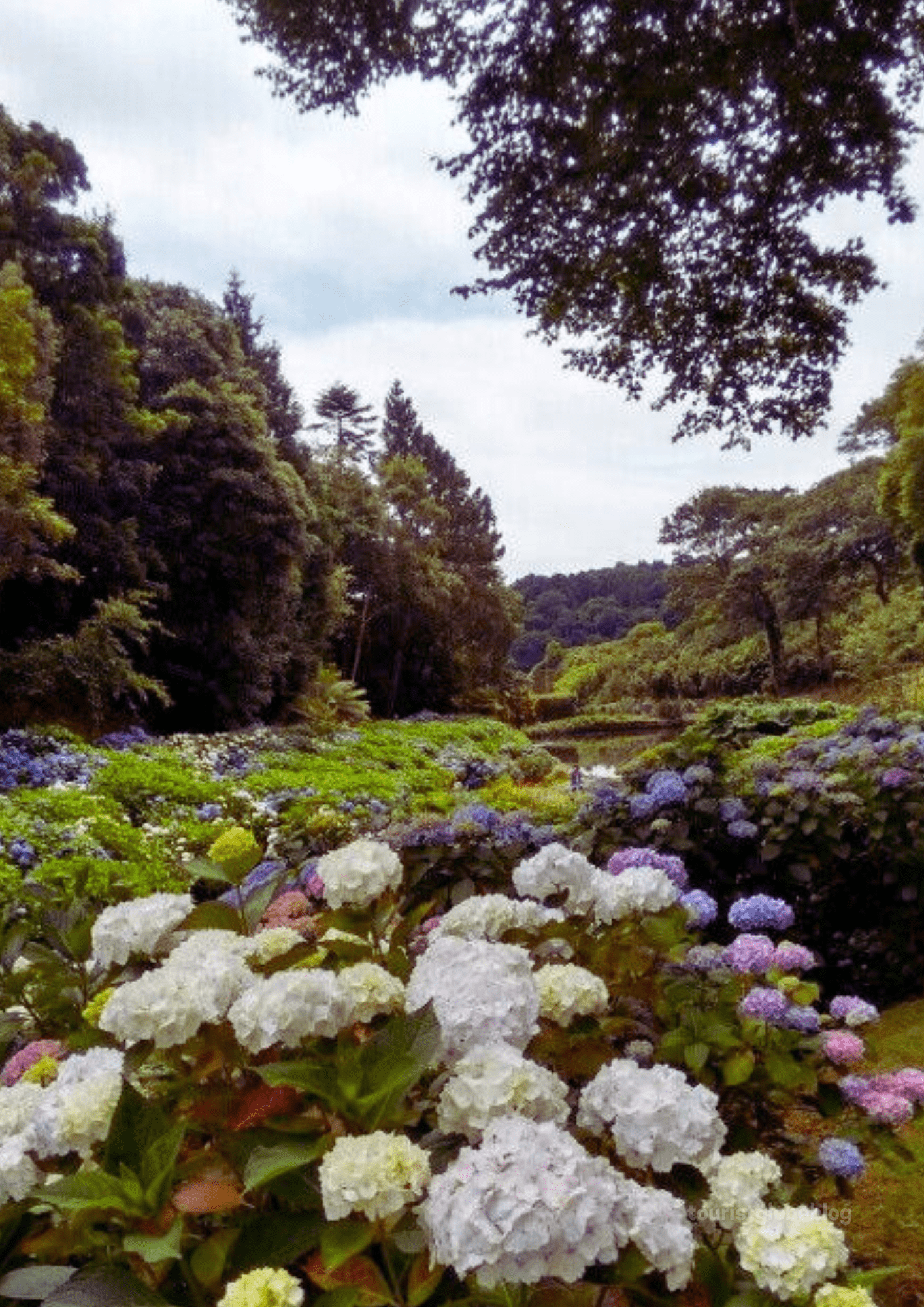Where does Mount Kilimanjaro fit into your bucket list? Mount Kilimanjaro is located in northern Tanzania, close to the south of the Kenyan border.
Its coordinates are 3°4′S, 37°21′E. At 5,895 m (19,341 ft), it is the highest peak in Africa and the tallest mountain in the world that isn’t part of a mountain range. But where is Mount Kilimanjaro? It’s a huge trip that will change your body, mind, and spirit. Are you ready to learn everything you need to know? Let’s go in there! 🧗♀️
🌟 Who Should Go to Mount Kilimanjaro?
Mount Kilimanjaro is the perfect place for people who enjoy adventure. It fits:
- People who want to do a high-altitude journey for 6 to 9 days
- Fitness fans that are well-prepared and going toward big summit ambitions
- People who appreciate nature are drawn to different temperature zones, from rainforests to snow.
- People who wish to make friends at camp, whether they are traveling alone or with a group
- Content producers and photographers looking for the dawn above the clouds
- Cultural explorers are interested in the Chagga and Maasai communities.
Mount Kilimanjaro is beckoning if you want to climb that will change your life.
🗺️ Where Is Mount Kilimanjaro?
Mount Kilimanjaro is in northern Tanzania. About 275 miles from Arusha, it’s in Kilimanjaro National Park. Uhuru Peak is the highest point in the park, which covers both the Meru and Kibo summits. You will start and complete your climb close to the cities of Moshi or Arusha.
✈️ How to Get to the Main Airport and Kilimanjaro
First things first: How far is Mount Kilimanjaro from the nearest airport?
- The main airport is Kilimanjaro International Airport (JRO), which is midway between Arusha and Moshi.
- Flights from Europe, the Middle East, and Africa come to this airport.
- You may also fly into Julius Nyerere International Airport (DAR) in Dar es Salaam and then take a local flight to JRO.
🚗 From the airport to the city
After getting to JRO, Mount Kilimanjaro is much closer. Pick:
- Your tour operator will take you from the airport to Moshi or Arusha.
- For budget tourists, there is a shared bus that takes about an hour.
- Taxi for hire if you book on your own
🏨 Where to Stay Close By
Are you ready to relax before the climb? After inquiring where Mount Kilimanjaro is, here’s where to relax:
- Springlands Hotel in Moshi is comfortable and convenient to where tours pick you up.
- Ameg Lodge: A charming, rustic place near Arusha National Park
- Jafferji House is a small, peaceful hotel that is perfect for cultural immersion.
- Cheap hostels are great for lone climbers who don’t have a lot of money.
🛠️ Picking a Climbing Path
Also question yourself, “Which route is best for me?” when you wonder where Mount Kilimanjaro is. “Common routes:
- The Machame Route is beautiful and helps you get used to the altitude; it takes around six to seven days.
- Lemosho Route: isolated, picturesque, and more likely to succeed; takes around 8 days
- Marangu (“Coca-Cola”) Route: Hut stays, easier, and more busy
- Rongai Route: Northern approach with a drier environment
- Umbwe Route: rough, steep, and only for fit hikers; quick climb
What is best for beginners? Lemosho or Machame. Best for getting ahead? Lemosho or Rongai, because of gradual exposure.
🧗 Safety and Altitude Sickness
The height of Mount Kilimanjaro is what makes it climbable. So, get used to it the proper way from the start:
- Drink more than 4 liters of water per day.
- Use poles for trekking
- Follow the guidelines of “climb high, sleep low.”
- Headache, nausea, and dizziness are all signs.
- If things go bad, get down right away—safety is not up for debate.
- You can trust the guides since they know the mountain and keep an eye on your health all the time.
🔌 Phone and Internet
Do you want to know where Mount Kilimanjaro is on your map? Guided climbers can obtain basic LTE and 3G connectivity around settlements, but not over 4,000 m. For the worst-case circumstances, bring a satellite phone or inReach gadget.
🎫 Reserve a Climbing Tour Operator and Costs
You need to hire a licensed operator to climb. Some providers are:
- Alpine Ascents: small groups of wealthy people
- Zara Tours: inexpensive, local, and tailored to you
- Thomson Safaris: Good guides and mid-range prices
- Depending on the duration of the journey, the number of the group, and the level of care, expect to spend between $1,500 and $3,000. For guides, cooks, and porters, you should leave a gratuity of 10–15%, which is usually $200–400 overall.
⏳ The Best Time to Climb
When is Mount Kilimanjaro at its best? Try to:
- January to March (brief showers)
- June to October (the dry season)
- The weather is clear, the paths are sturdy, and the odds of reaching the peak are good. Stay away from April to May and November because of the frequent rains.
🎒 Things you need to travel and how to pack
Once you know where Mount Kilimanjaro is, pack light and bright:
- Base, mid, and outer layers 👕
- Hat, gloves, and a warm down jacket
- Trekking boots that are waterproof 🥾
- Sunscreen and UV sunglasses
- Headlamp and extra batteries
- Snacks with a lot of energy
- Medications for high altitude and a first-aid kit
- 2L water pack
🍽️ What to Eat and Where
Food is vital on the walk, and your operator takes care of it:
- Breakfast: eggs, oatmeal, tea, or coffee
- Lunch: sandwiches, soup, and fruit
- Dinner: meat, pasta or rice, veggies, and hot drinks
- For added energy, include goodies like chocolate, almonds, or energy bars.
📸 Best Places to Take Pictures
Don’t just inquire where Mount Kilimanjaro is; take a picture of it:
- Shira Plateau at dawn with a pink snow glacier in the background
- Barranco Wall: stunning selfies on the edge of a cliff
- At Uhuru Peak, you can see the African dawn from the top.
- Saddle between Kibo and Mawenzi—moonlike landscape
- Base camp reflection lakes—perfect for golden hours
👥 Local Insight: What People Who Live Here Say
The Chagga people and guides look forward to Mount Kilimanjaro as a holy place. They call it “Kibo.” A lot of the time, guides say:
“Kili is a mountain of people—hard work and a big heart.”
“Honor the mountain and your team.”
Their concept in slow rising is similar to how people throughout the world become used to new things.
⚠️ Mistakes that tourists often make
When climbing, don’t make these mistakes:
- Undertraining—go on a hike first
- Wearing flip-flops at camp will give you blisters.
- Missing acclimatization days might cause difficulties with altitude.
- Don’t forget about bathroom logistics—bring tent liners.
- Not giving enough tips to the team is rude and makes them less motivated.
💸 Tips for Smart Budgeting
You don’t have to spend a lot of money to climb Mount Kilimanjaro:
- Pick between group climbs and private guiding.
- Climb in the months of January to March and June to October.
- Please bring your own gear so you don’t have to pay to rent it.
- Look for bundle offers from operators
- Give a decent tip, not an expensive one—fair share is sufficient.
💻 Remote Work and Creator-Friendly
Want to work from home at the base of Mount Kilimanjaro? Not much:
- No cell or Wi-Fi on the trails
- Suitable for those who make things, not digital nomads
- Bring a solar charger and a power bank.
- Plan the content of the summit ahead of time by downloading music and editing offline.
🗺️ Nearby Experiences to Add On
After asking where Mount Kilimanjaro is, keep your Tanzanian trip going:
- Big Five with wildebeest migration on safari in Serengeti
- Ngorongoro Crater is a place with a lot of animals.
- Zanzibar beaches—relax and watch the Indian Ocean sunsets.
- Lions that climb trees and birds live at Lake Manyara.
- East Africa starts with Mount Kilimanjaro.
Respect List (for Culture and the Environment)
- Use porters and guides from the area to help the economy.
- Take your garbage down
- Don’t stab plants or animals
- Give the workers a tip with respect.
- Learn some Swahili terms, such “Asante,” “Pole,” and “Karibu.”
- Save water; camps only have a little amount of it.
🕰️ Kilimanjaro has seen dramatic transformations over the course of several millennia.
- The glaciers have receded, which has resulted in the peak having a different appearance than it did one hundred years ago.
- Routes and eco-certifications have been expanded to include additional options.
- Conservation initiatives are stepping up, with trail rehabilitation and less garbage.
- The mountain is still beautiful, but it is constantly changing.
🧩 Last Things to Do Before You Leave
- Visa and passport are both valid.
- Book a flight to JRO and a shuttle to Moshi or Arusha.
- Climb permission and trip operator verified ✔
- Bring layered clothes, medicine, papers, and insurance.
- Carry tips in US dollars ✅
- Tell a friend or family member your route and when you’ll be back.
💭 My own experience and final thoughts
Every day, on maps, in my head, and on every training trek, I wondered, “Where is Mount Kilimanjaro?” when I first stepped at the foot of the mountain. Then, as I stood on Uhuru Peak, that question turned into amazement. The icy wind, the light peeking through the clouds, and the tears that froze on my cheeks were all signs that my life had undergone a transformation.
I hiked with people I didn’t know who became family. There were voices yelling, hearts racing, and teams celebrating. Every step of the way taught me to be patient, respectful, humble, and part of a community.
Would I do it again? Of course. Should you do it? Only if you are ready, with your body, mind, and soul all in sync.
“Where is Mount Kilimanjaro?” is more than just a question; it is the first step in breaking beyond your bounds and discovering who you actually are and will become. After putting on your boots and adapting to the height, go to the mountain peak. 🏔️





